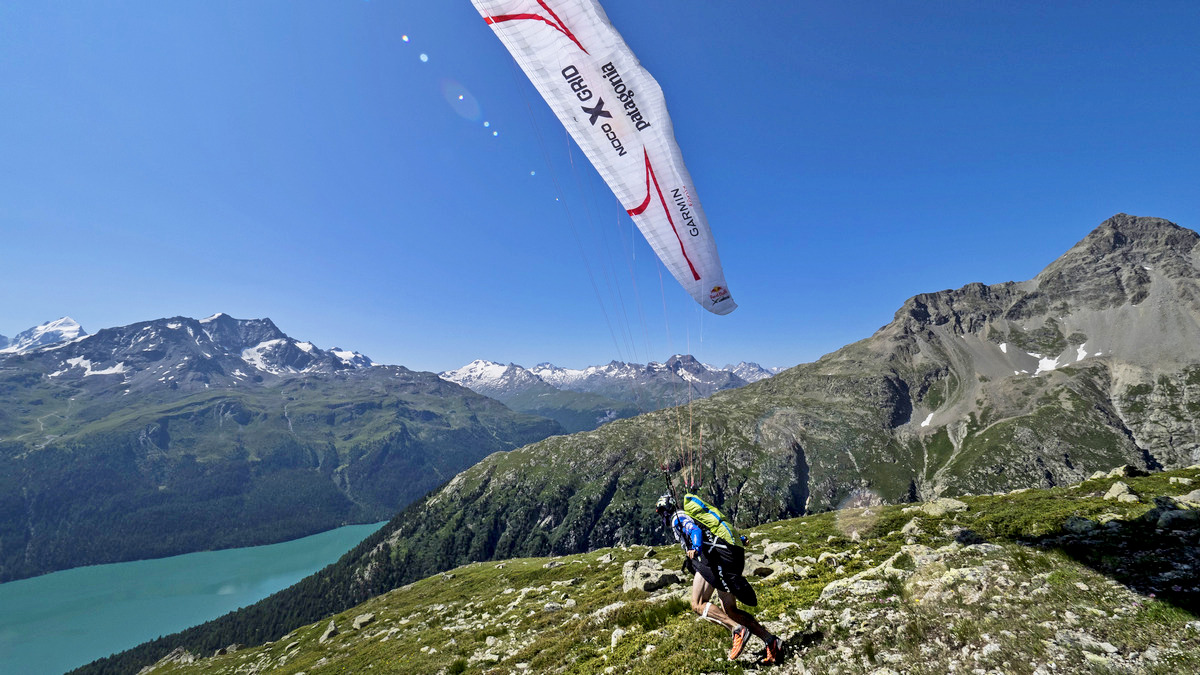
Try to choose a wing you will be happy on all the time, not only in the smooth conditions.
For paragliders, the flight certification class is a useful guideline, but doesn't show how stable a wing is, just its collapse recovery. Wings that are 'high-end' in their class usually have poorer passive safety. This is where good advice from a reputable dealer or instructor is essential – someone who can match your flying skills with the right gear.
EN-As are ideal for pilots who feel nervous in the air, often fly in turbulent conditions, or are in their first year of flying. They give limited feedback, dampened response and easy, measured handling. Their reduced glide and speed mean XC flying takes a little longer, but while you're exploring you won't be forced to learn new and exciting things about your glider at the same time. You can concentrate entirely on your piloting decisions. This can make it a stress-free solution for years of great flying, particularly if you are travelling.
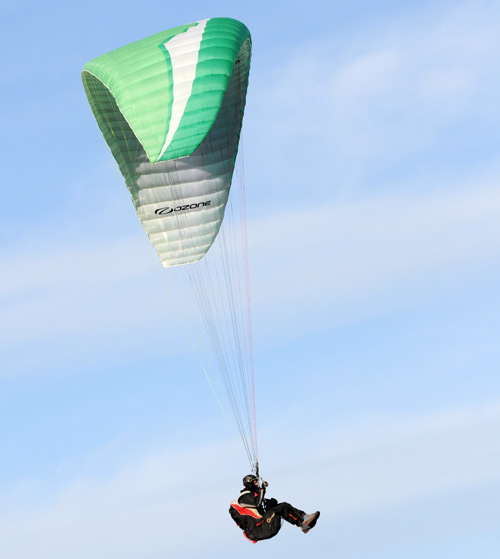
^ EN-A Ozone Mojo – it couldn’t be simpler
EN-Bs are suited to pilots who have recently been licenced, ideally with at least 10 hours of airtime. If you are a novice to XC or flying is your hobby then this is the class you should be in. It will take you 150 hours before you have begun to tap into all the glider has to offer. They also have the best resale value if you're considering a part-ex. This is the wing that will forgive you all your mistakes, and keep flying. You should complete a safety course (SIV), go to a couple of social competitions and complete many XCs on this glider before considering an upgrade.
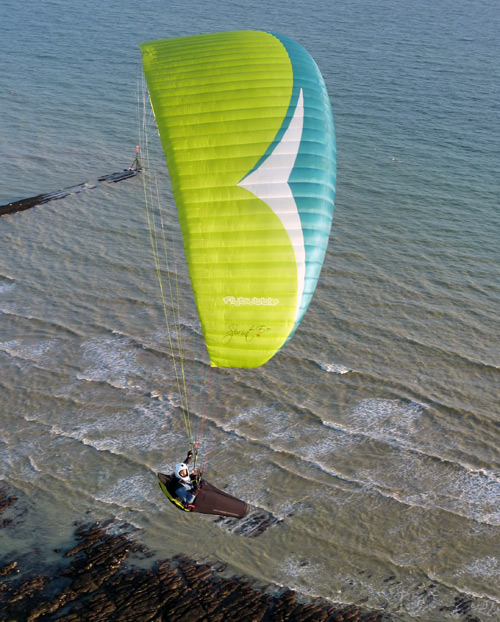
^ EN-B Gin Sprint Evo – an optimum aerofoil for fun and freedom
EN-Cs are suited to regular, competent pilots with 75 hours of accumulated thermic airtime. If flying is your primary sport and you are flying every weekend, do XC often, and have a few years of incident-free flying under your belt, then this could be your class. Incorrect pilot input to extreme situations can delay recovery, so an SIV course and regular practice (wingovers, spirals, asymmetrics) is recommended.
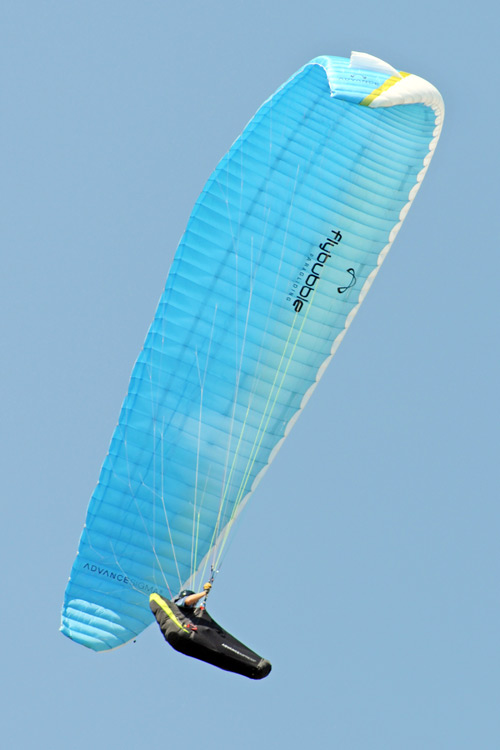
^ EN-C Advance Sigma 8 – a sporty wing with refined restraint
Only consider EN-D if you fly at least 100 hours a year in thermic conditions and have a natural feel for flying. The performance gain versus the loss in security becomes questionable, and you can only get a noticeable benefit if you are capable of flying long routes on a twitchy wing on full speed bar.
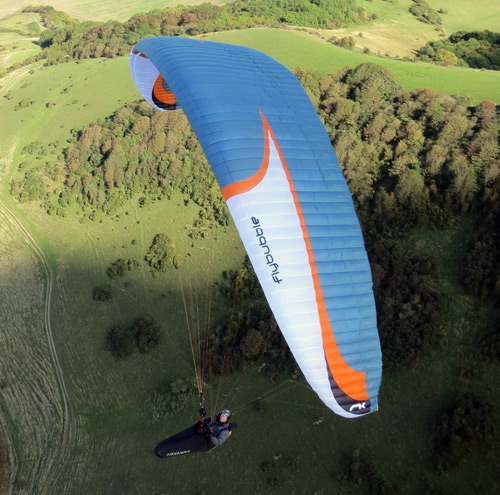
^ EN-D Niviuk Icepeak 6 – longer, thinner, faster, ready to race
To manage your wing risk, aim to fly one class below what you think you are capable of. By downgrading, you push your wing risk well into the green zone, which allows you to fly in more challenging conditions and explore new sites while maintaining a healthy safety margin, because wing risk will not come into the mix.
Cheap wings are often the cause of pilots being lumbered with high wing risk. The higher classes have poor resale value, and you can often come across a ‘bargain’. Unless it comes from a reputable dealer with a recent service report, steer clear. Before buying the porous eBay special, ask yourself, isn’t it worth paying extra to remove a flying risk?
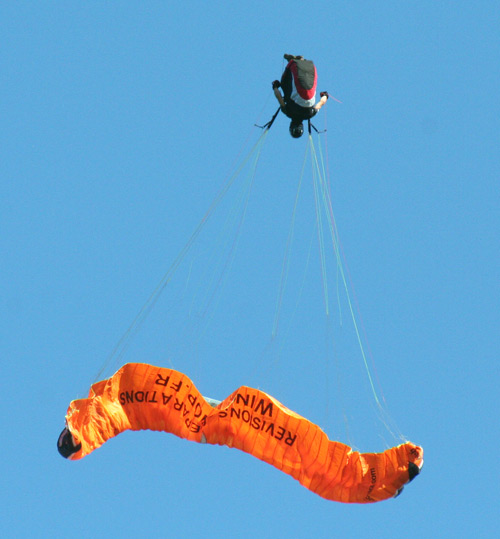
^ Just got a real cheap high performance wing from some guy who offered me a discount. I mean, a wing is a wing, right? What could possibly go wrong?
There are some other aspects to consider.
Although people like to quote their glider's top speed, useable speed is usually lower, and deteriorates with turbulence, especially on high-performance models (because you're too scared to push the bar). But in strong conditions, look critically at the airborne gliders before pulling up your trusty EN A. If the air is smooth, the high-aspect wings have the use of all their speed and might be flying when you can't. Some wings might have much higher wing loading to you. Having the slowest wing can mean you have higher risk. The old rule of thumb still applies: if you can’t hold it, fold it!
Your wing loading affects the stability and speed, and hence your wing risk. Stand on a scale with all your kit on your back and make sure you're within the weight range. Being underweight is usually more unpleasant than overweight (you get more collapses, more shaking around, and less forward speed). Your wing is only certified to have benign recovery within the quoted weight range.
So if it's windy, you can reduce your wing risk by flying with some ballast. Or if you're trying out a new wing and you know you're very low in the weight range, you need to fly in lighter winds than you'd normally consider flyable to counteract the wing risk.
The way you pack your wing affects its safety because when its getting old it might not hold a perfect aerofoil shape any more. We recommend concertina-folding using a concertina bag. Make sure you open your glider up when packing it wet or for prolonged periods. If the wing is packed wet and not allowed to dry, the cotton thread can also develop mildew and rot.
The wing age affects its risk, because the fabric deteriorates in UV, and this effect is worsened by abrasion, salty air, bad packing and prolonged storage in the cupboard under the stairs. Moisture can cause the sheaths on some lines to shrink when drying out, which is more pronounced on the unloaded rear lines, which causes your wing to fly slowly with a high angle of attack, closer to stall point.
Some of these things are not obvious to the naked eye, which is why a regular glider service is an essential risk management habit. We recommend this once a year.
In the next issue we'll look at essential safety gear. In the meantime ensure you complete your daily equipment inspection before launching. It’s a simple way of keeping your wing risk in the green – one less thing to worry about.
by Flybubble Paragliding
Brought to you by Flybubble
Like what we do? The best way to thank and support us is to buy gear from us and recommend us to others. Review our service on Trustpilot and our products on Flybubble Shop. You can also subscribe to Flybubble Patreon. Thank you!

